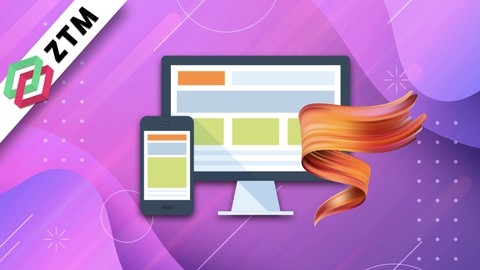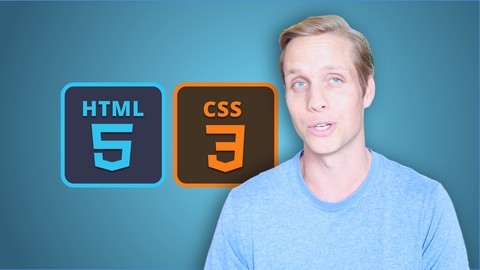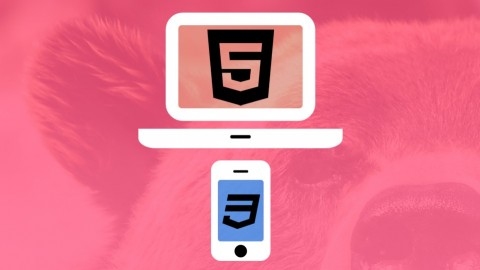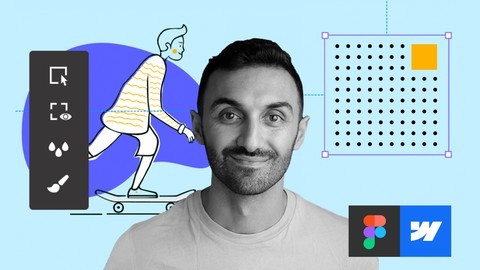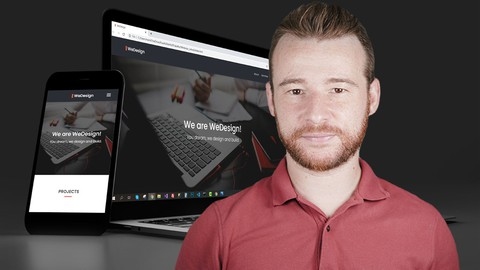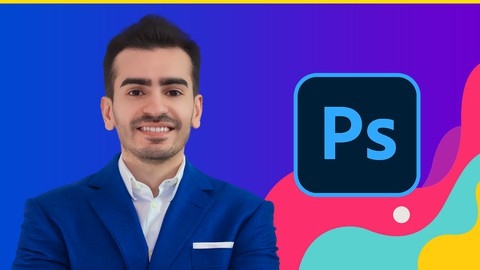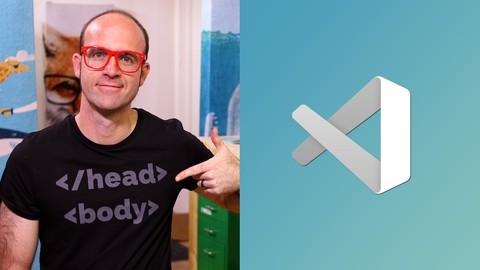Web design is the art and science of creating visually appealing and user-friendly websites.
Mastering web design opens doors to exciting career opportunities, allowing you to bring ideas to life, build online brands, and contribute to the ever-evolving digital landscape.
But with so many online courses available, finding the right web design course on Udemy can feel overwhelming.
You want a program that provides a comprehensive, engaging learning experience, equipping you with the skills needed to succeed in this dynamic field.
We understand your need for a course that delivers on its promises, offering practical exercises, real-world projects, and expert guidance.
That’s why we recommend User Experience Design Essentials - Adobe XD UI UX Design as the best overall Udemy course for web design.
This course stands out for its focus on both design principles and the practical application of Adobe XD, a powerful design tool used by professionals worldwide.
It goes beyond basic concepts, covering advanced topics like prototyping, animation, and creating user-friendly interfaces.
While this is our top recommendation, we have a wide array of other Udemy courses to explore.
Whether you’re seeking a beginner-friendly introduction, advanced specialization, or a specific focus on web development tools and technologies, we have the perfect course for your web design journey.
Keep reading to discover our curated list of recommendations and find the perfect fit for your learning goals.
User Experience Design Essentials - Adobe XD UI UX Design
You’ll start by learning the basics of Adobe XD, a powerful tool for designing user interfaces and experiences.
The course kicks off by introducing you to XD’s capabilities and teaching you how to create your own design brief.
You’ll then dive into wireframing, learning the difference between low and high-fidelity wireframes, and how to work with artboards, type, color, and icons in XD.
As you progress, you’ll learn how to add interactivity to your designs through prototyping and animation.
You’ll also explore techniques for gathering feedback and comments on your wireframes.
Moving into high-fidelity UI design, you’ll create mood boards and work with columns, grids, and advanced color tools like gradients and swatches.
The course covers working with text and fonts in depth, including using plugins like Lorem Ipsum.
You’ll gain skills in drawing shapes, working with images (including from sources like Unsplash and Pexels), and integrating with tools like Illustrator and Photoshop.
The course teaches you how to create reusable components, use repeat grids and stacks for efficient layouts, and design micro-interactions like toggle switches and burger menus.
Towards the end, you’ll learn how to pin navigation elements, create popups and overlays, and export your designs for sharing with clients, stakeholders, and developers (including generating code specs).
Complete Web & Mobile Designer: UI/UX, Figma, +more
This comprehensive course covers a wide range of topics essential for aspiring UI/UX designers.
You’ll start by learning the fundamentals of sketching and finding inspiration, which are crucial for the design process.
Then, you’ll dive into Figma, a popular design tool, mastering its interface, tools, and features through hands-on projects.
The course takes you through the entire design workflow, from user flows and sitemaps to wireframes and prototyping.
You’ll learn best practices for creating intuitive user experiences and bringing your designs to life with interactive prototypes.
You’ll also explore essential design principles like spacing, grids, typography, color theory, imagery, and iconography.
These concepts are essential for creating visually appealing and user-friendly designs.
The course covers accessibility, ensuring your designs are inclusive and usable for everyone, including those with disabilities.
You’ll also learn about design patterns and mobile design best practices, equipping you with the knowledge to create consistent and optimized experiences across devices.
As you progress, you’ll delve into visual exploration, motion, and microinteractions, adding polish and delight to your designs.
Additionally, you’ll learn how to build a design system, a crucial skill for maintaining consistency and efficiency in large-scale projects.
Towards the end, you’ll work on a comprehensive project, bringing together everything you’ve learned to create a complete design solution.
You’ll also learn how to collaborate with clients, gather requirements, and effectively communicate your design decisions.
Responsive Web Design: HTML5 + CSS3 for Entrepreneurs 2018
The course starts by introducing you to HTML5, the latest version of the markup language for building websites.
You’ll learn how to set up a text editor like Brackets and create your first HTML document.
It covers the basic HTML tags for structuring content like headings, paragraphs, images, and links.
As you progress, you’ll dive deeper into formatting text, adding citations and quotes, working with lists and tables, and using divs and spans as building blocks.
The course also explains crucial concepts like IDs, classes, and layout techniques.
Transitioning to CSS3, the latest CSS version, you’ll learn how to style your HTML content.
It covers the syntax, selectors for targeting elements, background colors/images, and the CSS box model which is fundamental for layout.
The real fun begins with a hands-on project to build an awesome landing page website from scratch.
You’ll set up the HTML structure with header, sections, and a form.
Then style everything using CSS - centering content, floating elements, styling the menu and buttons, creating columns, and more.
Along the way, the course provides challenges to test your understanding, as well as solutions to learn from.
By the end, you’ll have a fully responsive, multi-column landing page with sections for features, showcases, calls-to-action, and a footer.
Web Design for Beginners: Real World Coding in HTML & CSS
The course starts by introducing HTML, the markup language for creating web pages.
You’ll learn how to structure content using elements like headings, lists, and links.
It even covers adding media like images, audio, and video to your pages.
Once you have the HTML basics down, you’ll dive into CSS, the language for styling websites.
You’ll learn selectors to target elements, the box model for spacing, and layout techniques like floats and positioning.
The course goes beyond the basics too, covering typography, backgrounds, animations, and effects like shadows and rounded corners.
An entire section is dedicated to responsive design, ensuring your sites look great on any device.
You’ll learn responsive grids, flexbox for layout, and CSS Grid - a powerful new technique.
The course doesn’t just cover coding though.
You’ll also learn how to leverage JavaScript functionality without actually writing JavaScript, like creating slideshows, revealing content on click, and image galleries.
It even introduces Bootstrap, a popular CSS framework.
To take your skills further, you’ll get an overview of Sass, a CSS preprocessor that makes your stylesheets more maintainable and powerful.
Finally, you’ll learn how to put your site live on the web using GitHub Pages.
Complete Web Design: from Figma to Webflow to Freelancing
You’ll start by mastering the secrets of good design principles like layout, typography, color theory, and using photos effectively.
The course dives deep into visual hierarchy, alignment grids, typeface personalities, sampling colors, image overlays and cropping techniques.
You’ll even learn six design tricks every designer should know, such as contrast, white space, and creating tension.
Once you’ve nailed the design fundamentals, it’s time to practice like an artist.
You’ll mimic designs from pros, create mood boards for inspiration, and design your first beautiful web page - a chat app homepage.
This hands-on approach ensures you internalize the concepts.
The real fun begins when you transition to Webflow for web development.
You’ll learn how web pages work under the hood with HTML, CSS, and the box model.
Step-by-step, you’ll build the chat app page, mastering elements like navbars, buttons, images, flexbox, and interactions.
Responsive design is key, so you’ll optimize the site for all devices.
You’ll tackle an end-to-end client project - from design brief and wireframes to a fully functional, dynamic website with a blog and CMS integration.
This real-world experience is invaluable.
The course even prepares you for freelancing with a free portfolio website, tips on finding gigs online and in-person, pricing strategies, proposal templates, and a whopping 28 tips to win on Upwork.
You’ll be equipped to start making money right away!
With advanced topics like custom modals, code embeds, and Photoshop techniques like unboxing and stretch crops, this course leaves no stone unturned.
UX & Web Design Master Course: Strategy, Design, Development
This comprehensive course takes you through the entire process of building a website - from defining the strategy and planning to designing the user interface and finally coding it into a live website.
The course begins by teaching you how to lay the proper foundations for a successful website project.
You’ll learn how to determine the goals, requirements, and value proposition through user and stakeholder research.
This crucial definition phase ensures you build something people actually need and want.
Next, you dive into information architecture - organizing the content and navigation in an intuitive way.
You’ll learn techniques like creating sitemaps, wireframing, and validating the architecture through user testing.
Having a solid IA makes the design and development phases much smoother.
The design section covers core UI/UX principles to create user-friendly and visually appealing interfaces.
You’ll learn how to design for different devices, organize information hierarchically, and apply consistent styling.
Step-by-step exercises guide you through designing interfaces for various types of sites like blogs, e-commerce stores, and business websites.
In the development module, you get hands-on practice building three different websites - a basic HTML/CSS site, a WordPress blog, and an e-commerce store with WooCommerce.
You start from the basics of HTML/CSS and work your way up, learning how to structure, style, and add functionality.
For WordPress and WooCommerce, you learn how to install, configure, customize themes, and manage content/products.
The instructor walks you through every step with clear video explanations and exercises to solidify the concepts.
You’ll not only learn the technical skills but also best practices for planning, collaborating with clients/teams, and quality assurance before launch.
Ultimate Web Designer & Web Developer Course
This comprehensive course starts by introducing you to the fundamentals of visual design principles like color theory, typography, grids, and more.
You’ll learn industry-standard tools like Figma for designing websites and user interfaces.
The course then dives deep into HTML, CSS, and cutting-edge technologies like CSS Flexbox.
One of the standout sections is on JavaScript, where you’ll build a functional tip calculator application.
You’ll also learn jQuery, a popular JavaScript library, and create a mini-game using it.
The course covers Bootstrap, a powerful front-end framework for building responsive websites quickly.
You’ll gain expertise in back-end development with PHP and MySQL.
Through hands-on projects, you’ll build a client address book application, learn to create login systems, and convert static websites into dynamic ones.
There’s even a dedicated section on WordPress, covering themes, plugins, and eCommerce setups.
You’ll constantly apply your learning by designing and developing your custom website throughout the course.
By the end, you’ll have a professional portfolio piece to showcase your skills.
Brad’s teaching style is clear, concise, and engaging.
He breaks down complex concepts into easy-to-understand lessons, guiding you step-by-step with practical examples and projects.
The course is well-structured, allowing you to progress seamlessly from beginner to advanced topics.
Complete Web Design: HTML, CSS, Javascript, jQuery, Vue, Git
The course starts with the fundamentals of HTML and CSS, teaching you how to structure web pages, style content with CSS selectors, work with images and videos, and use semantic HTML5 elements.
You’ll learn techniques like flexbox for layout and apply styles for typography, colors, and hover effects.
As you progress, you’ll build practical projects like an e-commerce site with a mobile menu, hero section, product listings, and newsletter signup.
Media queries are covered in-depth for creating responsive designs that adapt to different screen sizes.
The course dives into JavaScript, covering DOM manipulation, data types like strings and arrays, functions, loops, conditionals, events, forms handling, and working with dates and times.
You’ll build a dynamic to-do list app utilizing JavaScript.
jQuery is introduced for simplified DOM scripting and effects.
Then you’ll move to modern frameworks like Vue.js, learning declarative rendering, directives, components, state management with Vuex, routing, and the Composition API.
Projects include a quiz game, shopping bag app, and task manager.
You’ll also learn TypeScript as a typed superset of JavaScript, and state management with Pinia.
The course covers Git version control, creating repositories, branching, merging, resolving conflicts, using remote repos on Github, and GUI tools like Github Desktop.
Learn Photoshop, Web Design & Profitable Freelancing 2024
The course covers the fundamentals of Photoshop, web design, and freelancing - an excellent combination for aspiring web designers.
You’ll start by learning Photoshop essentials like layers, tools, and exporting designs.
The course doesn’t just teach you how to use Photoshop but also reveals best practices professionals follow.
For example, you’ll learn about nondestructive editing with adjustment layers and smart objects.
Once you have a solid Photoshop foundation, you’ll dive into hands-on web design projects without coding.
You’ll create modern website elements like navigation menus, call-to-action buttons, hero areas, and more.
The course emphasizes responsive web design techniques to ensure your sites look great on all devices.
But the real value comes from the freelancing section.
You’ll discover the pros and cons of platforms like Upwork, Freelancer, Fiverr, and 99designs.
The course even analyzes a real $1200 project, revealing common mistakes designers make when working with clients.
To reinforce your skills, you’ll work through seven real-world client projects with varying budgets from $300 to $1200.
You’ll experience the entire process - from understanding the brief to getting feedback and making revisions.
This practical experience is invaluable.
The course also covers important freelancing topics like building a portfolio, finding high-paying jobs, handling criticism, and avoiding burnout from neck and eye strain.
You’ll get expert tips on standing out, working smart, and outperforming the competition.
Throughout the course, you’ll receive personalized feedback on your designs from the instructor.
You can even submit your portfolio for a detailed review before starting your freelance journey.
With this course, you’ll gain the Photoshop, web design, and business skills needed to thrive as a freelance web designer.
Responsive Web Design Essentials - HTML5 CSS3 Bootstrap
The course starts by introducing you to the basics of HTML and CSS.
You’ll learn how to create and test your first web page, understand HTML5 and CSS3, and work with essential HTML tags like head, body, title, and description.
Along the way, you’ll pick up skills like adding structure with div tags, styling with CSS classes, nesting divs, and separating your styles into an external CSS file.
The real fun begins with Project 1 - building a restaurant website from scratch.
You’ll master techniques like adding images, links, Google Maps embed, email buttons, and even putting your site live on the internet with your own domain.
The projects keep getting more advanced as you move to a bike repair site (Project 2) where you’ll dive into flexbox, responsive design principles, custom buttons, and even a dropdown navigation menu.
In Project 3, you’ll build a full responsive portfolio website, learning media queries to adapt layouts for different devices.
You’ll explore image optimization, srcset for responsive images, pinned navigation, and a mobile menu powered by jQuery.
The course culminates with Project 4 - a website built using Bootstrap 4.
You’ll gain insights into Bootstrap’s grid system, components, styles, and customization.
Along the way, you’ll create uneven column widths, responsive images, sticky navs, image carousels, card layouts, and more.
What stands out is the course’s hands-on approach through projects that reinforce concepts like responsive design, flexbox, media queries, and Bootstrap.
The lectures explain techniques clearly, often showing multiple ways to achieve the same result.
You’ll pick up valuable workflow tips for tools like Visual Studio Code, Chrome DevTools, and exporting assets from design software.


